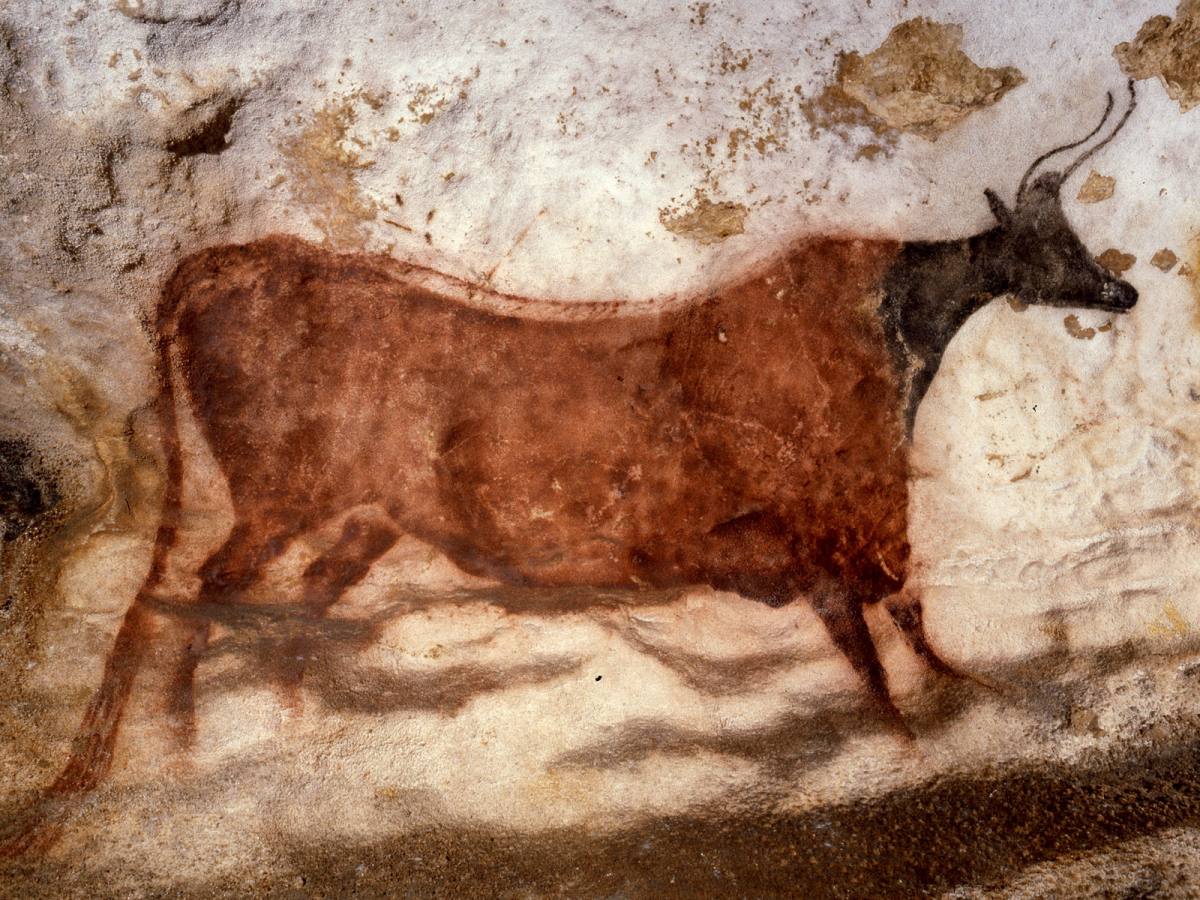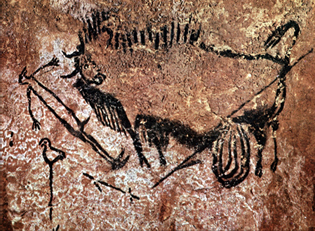The Discovery of the Lascaux Cave
- 12th September 1940 -
Marcel Ravidat was walking his dog in the Dordogne region of South-West France on Lascaux Hill, near the village of Montignac. The dog suddenly disappeared into a cavity that was hidden by bushes. Marcel went to find the dog and called him out. The following day, 12th September, he brought three friends with him to investigate the cave further. Georges Agniel, Simon Coencas and Jacques Marsal followed their friend into the cave. There they saw some extraordinary pictures of various animals. They decided to return the following day with a better lamp and on their return found that the cave stretched further back than they thought and the number of pictures on the walls was simply huge. They told their teacher about what they had found and the Lascaux Cave is now a UNESCO World Heritage Site.
 The pictures that have been painted and etched onto and into the walls were thought to have done between 15 – 17,000 years BC in what is known as the Palaeolithic era. The Stone Age is divided into 3 basic periods – Palaeolithic, Mesolithic and Neolithic, Old, Middle and New Stone Ages. These are then further subdivided. These paintings are thought to have been done in the Upper Palaeolithic era. The main cavern is 66 feet wide and 16 feet high.
The pictures that have been painted and etched onto and into the walls were thought to have done between 15 – 17,000 years BC in what is known as the Palaeolithic era. The Stone Age is divided into 3 basic periods – Palaeolithic, Mesolithic and Neolithic, Old, Middle and New Stone Ages. These are then further subdivided. These paintings are thought to have been done in the Upper Palaeolithic era. The main cavern is 66 feet wide and 16 feet high.
The paint that has been used is mainly blacks, yellows and reds. The black is probably from charcoal or manganese oxides, the yellows from various iron compounds and the reds from hematite or raw from red clay. Some of these minerals do not exist in the area and must have been transported from some distance which indicates a certain amount of trade and organisation on their part. The minerals are then ground up and mixed with water or animal fat or heated.
The process of getting the paint onto the walls was done with their fingers, brushes made from moss or hair or by blowing the powdered pigment through a hollow bone, many of which were found at the site, into an incision made by a flint tool. The outlines were often engraved and then coloured black, possibly using a burnt stick, before being coloured in. They used the curvature of the walls to help them show movement in the pictures. Wooden scaffolding was erected to paint higher up or on the ceiling. Many lamps have been found in the cave. These were small blocks of stone with a recess cut out of them filled with animal fat. They used braids of hair as a wick.
The purpose of the paintings is far from known. Ideas have ranged from the storytelling of a hunt, to decorating their home to a more spiritual idea of worshipping animals or to bring them luck in their next hunt – if you can draw an animal then you have power over it and you can then catch it.
There are over 2000 figures and abstract designs in total, the most common being equines – 364. There are also 90 stags, many cattle, bison, ibex, birds, a bear, rhino and a human. The cave is split into sections. One of the most famous being the Great Hall of the Bulls. Here are shown four large bulls, or aurochs, a now extinct species of cattle, with the largest one 17 feet long. These tower above horses and deer which seem to be running away. Although these are drawn from side on they have shown the horns turned around. The skill of the painters is far ahead of its time with their use of perspective and motion.
 Leading away from the Great Hall is an area sometimes thought of as a prehistoric Sistine Chapel – the Axial Gallery. The roof shows a group of red aurochs with their heads forming a circle and a horse galloping away. Again the use of perspective here is extraordinary. Other areas include the Shaft of the Dead Man – with an image of a naked stick man, the Lateral Passage and the Chamber of Engravings.
Leading away from the Great Hall is an area sometimes thought of as a prehistoric Sistine Chapel – the Axial Gallery. The roof shows a group of red aurochs with their heads forming a circle and a horse galloping away. Again the use of perspective here is extraordinary. Other areas include the Shaft of the Dead Man – with an image of a naked stick man, the Lateral Passage and the Chamber of Engravings.
The cave was opened in 1948 and attracted more than 1500 people a day. In the late 1950s various lichens and crystals started to grow. The carbon dioxide in the breath of the visitors and the lights were thought to be damaging the colours of the paintings and it was closed in 1963. In 1983 a replica of the Great Hall of the Bulls and the Painted Gallery section, called Lascaux II, was opened just 220 feet from the original opening. Problems have continued to beset it however. In 2000 a fungus started growing which was blamed on the high powered lights used and the new air conditioning that had been installed. In 2006 a new black mould appeared causing them the shut the whole cave to everyone for three months. One person was allowed in for twenty minutes, once a week, to check on conditions.
These problems have persisted. A conference in Paris in 2009, with 300 people from 17 different countries, brought together experts from around the world many of whom had tackled similar problems in other historic places. They published their findings in 2011 but the problems are still there today and an International Scientific Committee for Lascaux has been established to preserve the site for future generations.


